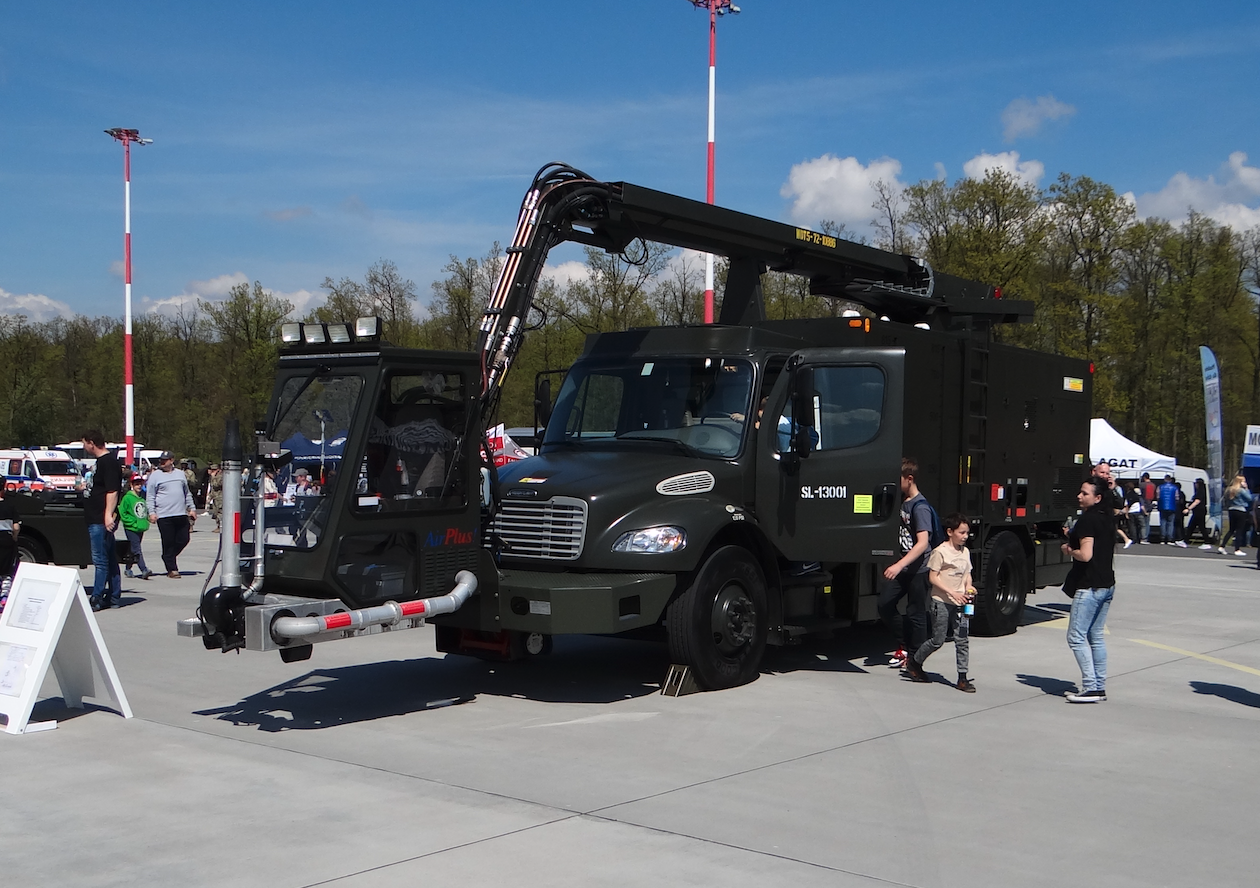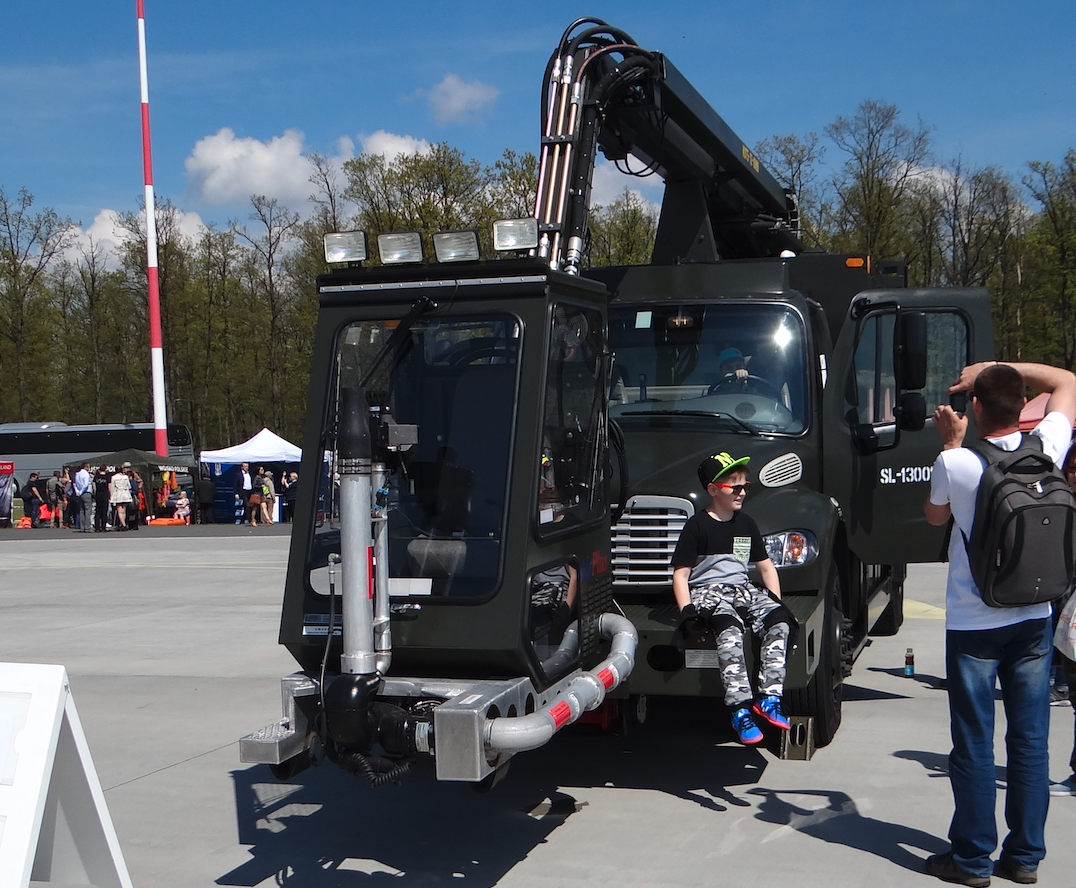Kraków 2018-09-15
Removing ice from airplanes.



The real bane of pilots is ice. Few people know that at the beginning of aviation, it was icing that was the main cause of unsuccessful flights over the Atlantic. In Poland, it is true that it is far from the conditions prevailing in Greenland, but icing can occur in virtually all conditions, both in winter and in summer. Falling snow is not unusual and must be cleared from the plane before the flight. But a typical winter problem is also the supercooled fuel in the tanks, which causes a raid on the airframe in the form of frost during a temporary stay at the airport. Another phenomenon is a fine drizzle that turns into a layer of people on the cold airframe. Moisture can penetrate the mechanisms of the control surfaces and turn into ice there.
During the flight, the growing ice causes a significant increase in drag, adversely affects the operation of engines, and reduces the controllability and stability of the aircraft. To the greatest extent, ice is deposited on the lifting surfaces, which has a negative impact on their aerodynamic properties, causing an increase in drag, increasing the weight of the aircraft. The lift coefficient decreases, and thus the stall speed increases. Therefore, airplanes are equipped with automatic de-icing systems of the leading edge of the wings, tail and engine air intakes.
Not for nothing, commercial aircraft companies test their aircraft in winter conditions. Every modern airport has a de-icing station for airplanes. Shipping companies generally have procedures for when their crew is required to use the de-icing service. They prefer to pay several thousand zlotys than to pay millions for damages and the deterioration of the company's reputation. And in the history of aviation, such cases have happened more than once. But in recent times there has been a phenomenon called time pressure, and this has sometimes caused an accident.
International Civil Aviation Organization regulations require that a professional de-icing facility be set up at any commercial airport where icing may be present. One of the factors determining its location is the guarantee of a protective time after the use of anti-icing substances, the so-called Holdover Time (HOT for short), which allows taxiing until the aircraft is cleared to take off. Therefore, large airports have several stands located at different locations on the take-off area. Very often, at a short distance from the RWY threshold from which the plane will take off.
De-icing is usually carried out using a special vehicle called an elephant in aviation jargon. It is associated with the elephant which ejects water from its trunk. Before the start of de-icing, documentation is prepared in which the crew declares whether the defrosting is to be one-stage or two-stage, the solution concentration is agreed, the airframe condition and weather conditions are determined. Before starting the de-icing process, the flight crew should prepare the plane for the de-icing process; position the airplane control surfaces in the de-icing configuration, close the air receivers to prevent any liquid vapor from entering the airplane through the vents, and turn on the cockpit voice recorder, and then advise that it is ready to begin de-icing.
For safety reasons, de-icing should be performed with the airplane engines turned off, but with some exceptions, it is possible to de-icing with engines operating in the idle range (IDLE mode), and this is the most common method.
Several types of ice removal and protection fluids are used for chemical deicing, with different chemical compositions, viscosities and guaranteed protection times. For example, Type II fluids contain at least 50% glycol, water, a thickener, and an inhibitor, and their viscosity increases as the temperature decreases. Chemical companies in recent times have made great progress in chemicals that have a longer and less harmful effect on the airframe: aluminum, plastic, varnish.
Ice removal is often done in two steps. The first step is to remove snow and ice from the airframe. In the second stage, mainly the wings and tail are protected against the formation of new layers of ice and snow on the aircraft surfaces.
The de-icing time of an airplane varies greatly. It can only take 10 minutes or even 90 minutes. De-icing may only be carried out with hot water. Its temperature at the outlet of the cannon (nozzle) is 60 degrees C. Cannons spraying the plane give much lower pressure at the outlet than the cannons of fire engines. The point is not to destroy the airframe. For the Boeing B.737, the pressure of the solution on the airframe must not exceed 0.7 bar. Therefore, the solutions fly out in the form of aerosols from the "elefant" cannon.
The amount of fluid used to protect the aircraft against icing, i.e. in the so-called second stage, should not be less than: 480 liters - in the case of Boeing 767, 200 liters - in the case of Boeing 737 series 300, 400 and 500, and 230 liters - in the case of Airbus A320.
For several years, de-icing of aircraft surfaces using infrared heaters has been used. So far, infrared heaters have been successfully used at airports in the USA. For several years also in Europe. This de-icing consists in placing the aircraft in a hangar for this purpose, equipped with a set of infrared heaters suspended under the roof of the hangar.
In flight, modern airplanes can handle ice on their own. Various automatic methods are used for this purpose. The leading edges are de-iced: with hot air, electric heaters or pneumatic, with rubber caps on the leading edge. Here, air is introduced under the rubber, which "pumps" the pad and this is how the ice crumbles. There are also methods of spraying the leading edge with glycol. The glycol escapes through the holes and moves in fine grooves. This is also how propeller blades are de-iced. Glycol is also sprayed on the front windows of the cockpit. Electric de-icing turns out to be the most effective. Thus, for example, pressure receivers, so-called Pitot tubes, are de-iced. In addition to heaters, there are methods of ice removal based on electromagnetic induction. The system causes electromagnetic vibrations. Another electric method is graphite foil, which, when electrically applied, rapidly increases its temperature, thus separating the ice layer from the airframe.
Written by Karol Placha Hetman
